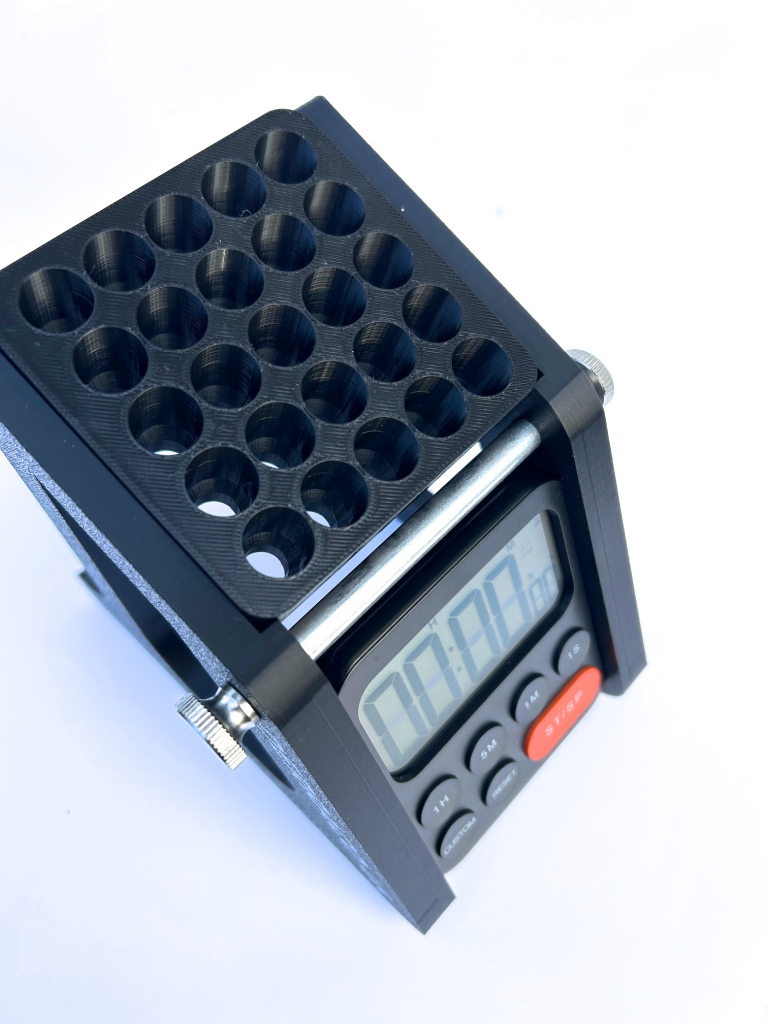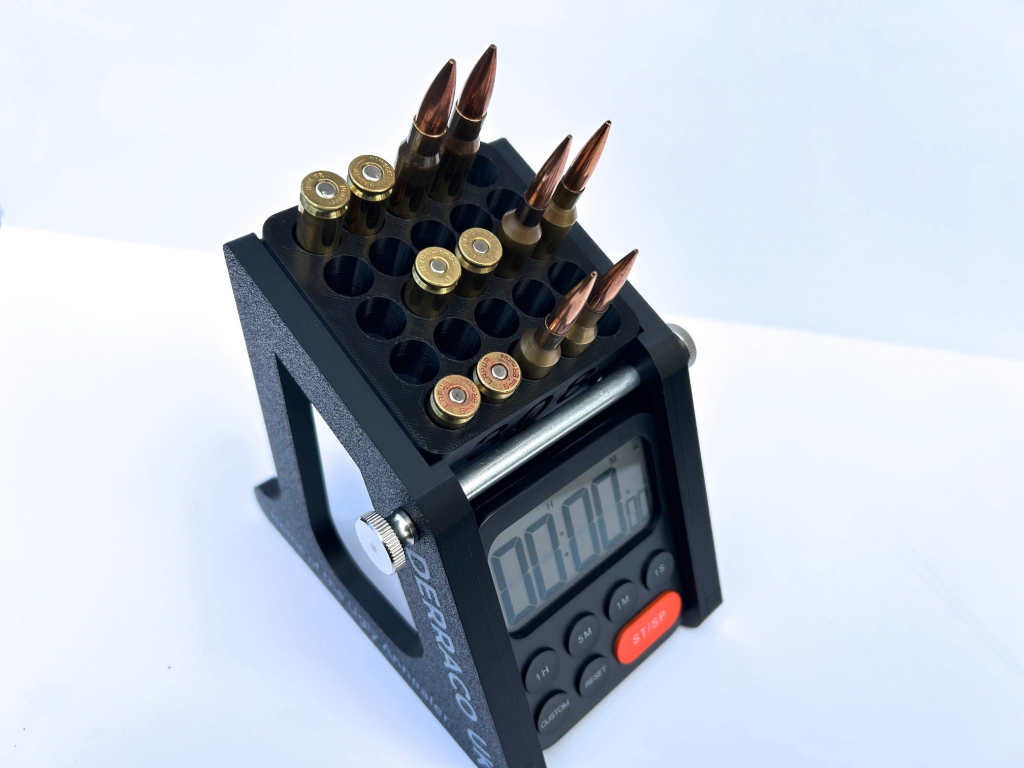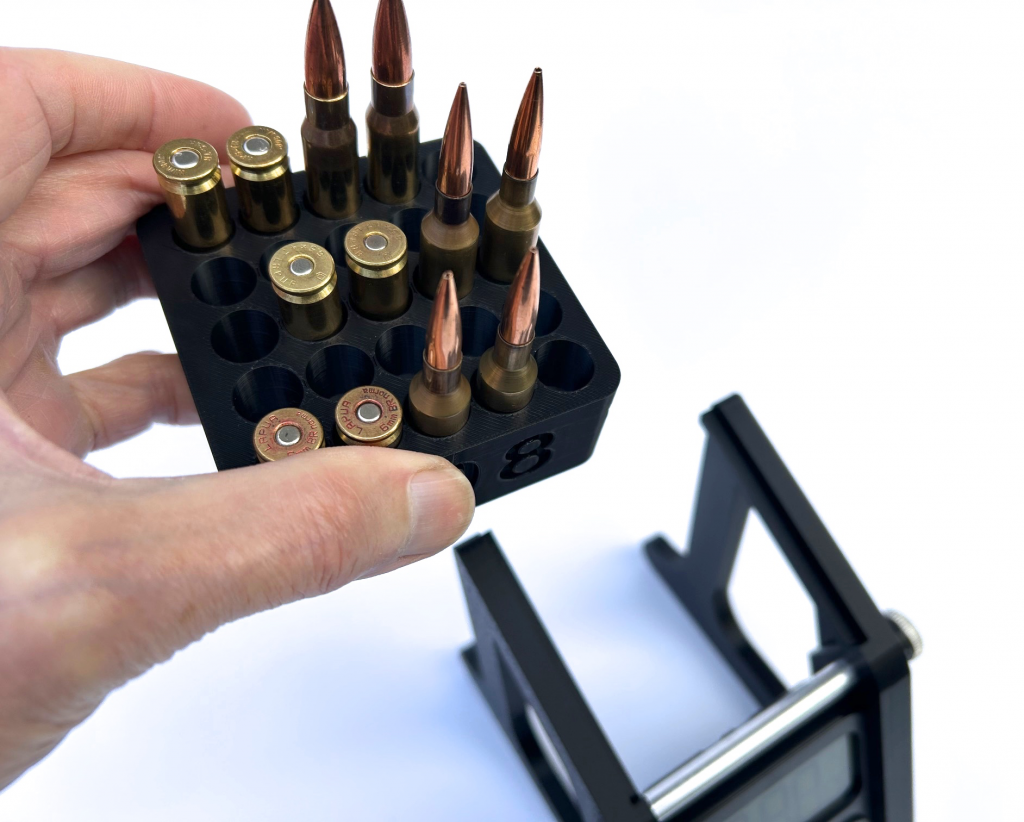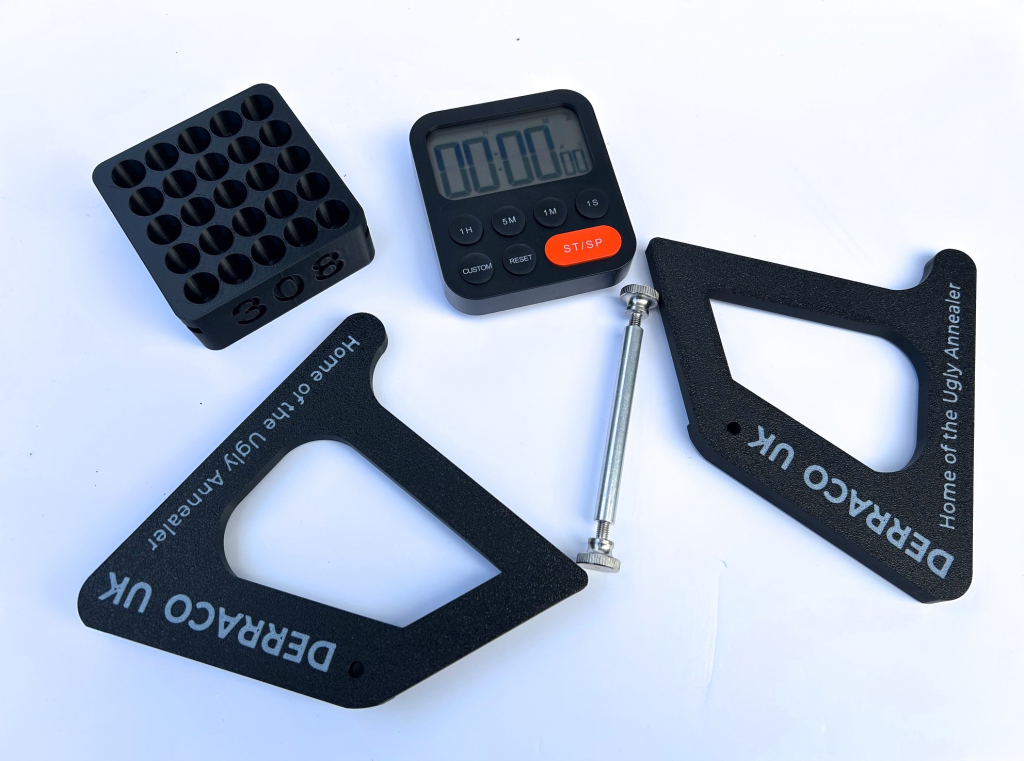Every so often a bit of kit comes along that is really useful, does the job and is well designed and well made and if it represents value for money then that’s all the boxes ticked. Our product is made by Derraco Engineering Ltd, an Australian firm, which was developed by two knife makers and machining hobbyists who sadly lost their jobs due to Covid in 2021.

The pair spent over a year perfecting the designs for one of their other products, the ‘Ugly Annealer’ machine, choosing the best and most appropriate materials to make the machine, meaning no plywood case, no cheap plastics, and no corners could be cut.
Since that time the company has gone from strength-to-strength and gone on to develop a whole host of other related tools for the shooting community and their reloading needs. Please have a look at their website https://www.derraco.co.uk/about-1
The ethos of the company is always to offer designs which are both aesthetic as well as functional and all engineered to the absolute highest of tolerances.
Over the years, the Ugly Annealer and now other reloading tools as well, are available worldwide thanks to a team of distributors in most countries (including the UK) who, between them, can ensure you have access to whatever tools you need to make your reloads as accurate and easily achieved as possible.
Although the Ammo Buddy is Derraco-made, it’s inspired by a similar one made in America which has been on sale for a few years over there. I’d always wanted one but the hassle of ordering from the States plus shipping and import duty rather take the edge off buying a ‘nice to have’ but not essential piece of equipment. But, when I saw this 3D printed UK version on the ‘net I just had to have one.

So, if you’re not a benchrest shooter you might be asking yourself “Why do I need one”. Short answer – you don’t but, if you are a benchrest shooter then you’ll probably want one. Certainly, other shooting disciplines are timed – such as some 22 Rimfire disciplines and even F Class to some extent. The Ammo Buddy may find a use elsewhere but for me it will be on the bench.

The Buddy is to some extent calibre specific and appropriate inserts are offered to suit most popular cartridges including rimfire and they are very reasonably priced thanks to the miracle of 3D printing.
The one I have for review has three inserts – a 6PPC, a rimfire and a 308 but the 308 will happily hold similar cartridges with the same diameter as the 308. The photograph shows 308, 6mmx47 Lapua and 6mmBR rounds – all in the 308 insert. Ideally I would have a dedicated insert for the 6BR as it sits a little too deep in the holder for rapid aquisition. The fullbore holders generaly hold 25 rounds which should be plenty for most disciplines. The 22 Rimfire holds 30. If you prefer you can stack your rounds bullet-up.

The Buddy is ‘self assembly’ and it took me under a minute – one thumb-screw to tighten. I think the idea is that you can easily take it apart for storage if you prefer. The enclosed timer is better than any I’ve seen for clarity and ease of operation and records in hours, minutes and seconds. The ammo holders simply slot in place so can be swapped without disassembly – shoot 6PPC benchrest one day and 308 F Class the next!
My sample is in black but it’s also available in white. If you want one, it’s available for an incredible £35 which includes the timer and one ammo block of your choice. Additional blocks are only £5. Order from www.Derraco.co.uk Postage is £4.55.
In conclusion – what a well thought-out bit of kit. I hope to get chance to review some of their other products in the future.
